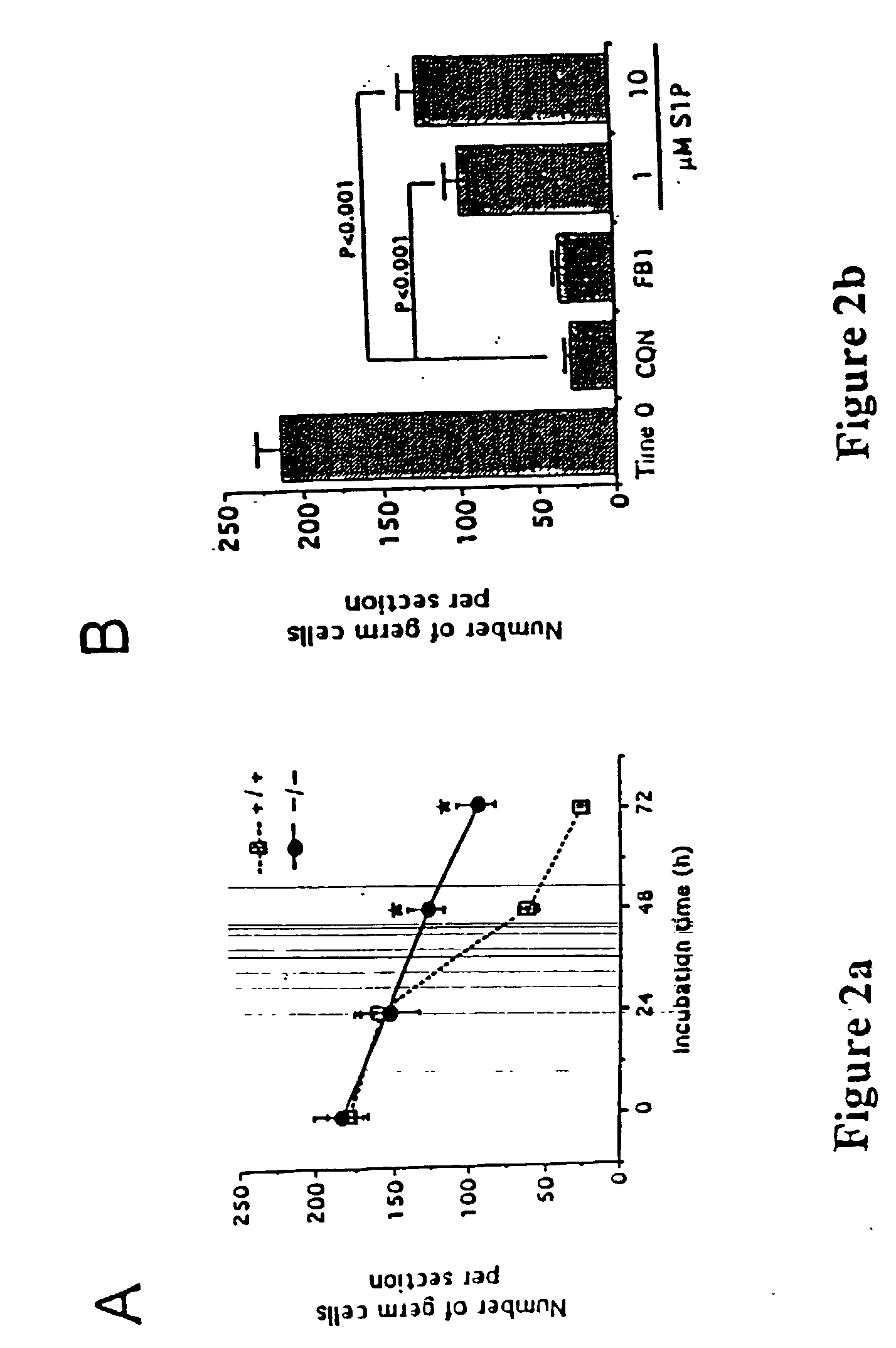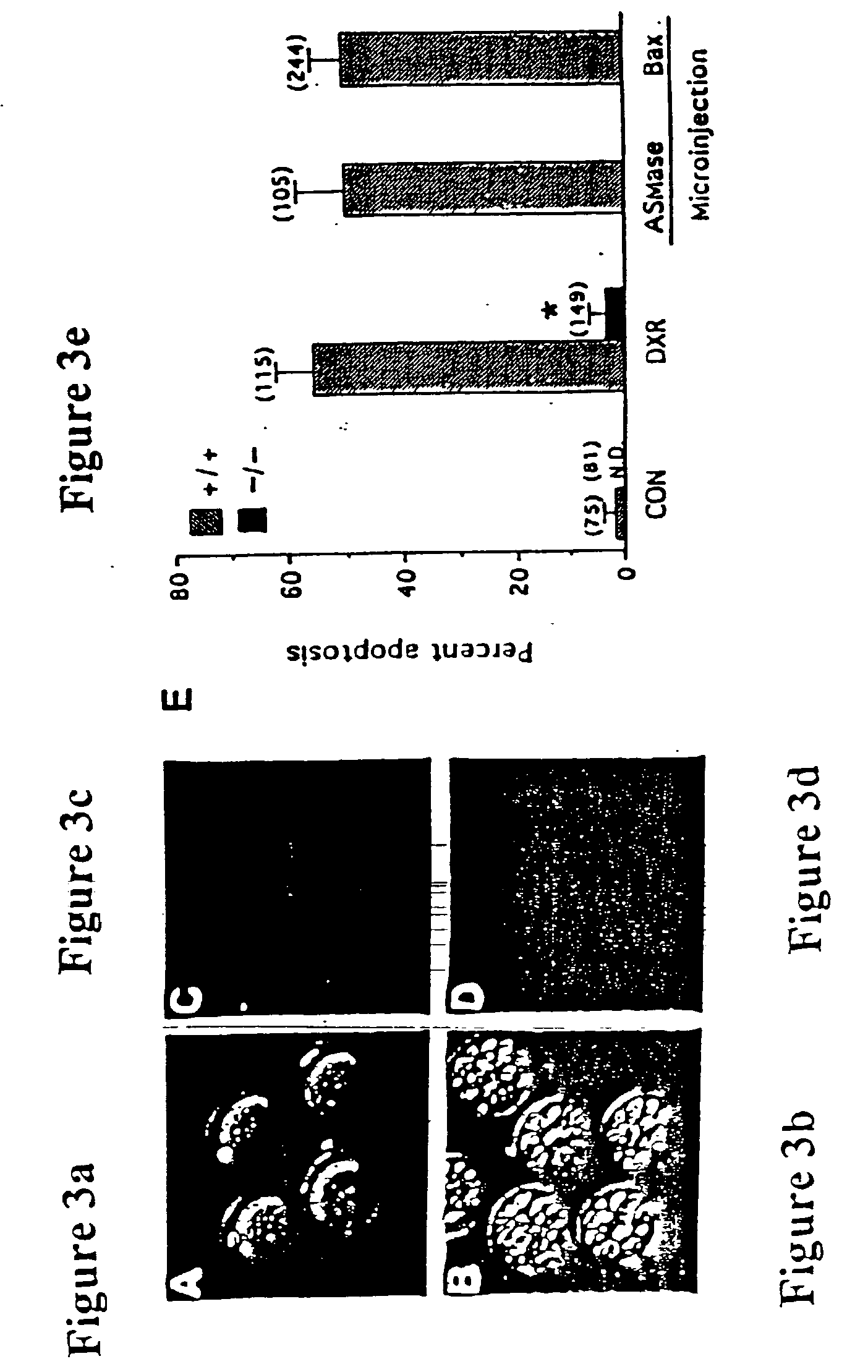Protection of the female reproductive system from natural and artificial insults
a technology for protecting the female reproductive system and natural and artificial insults, applied in the direction of phosphorous compound active ingredients, prosthesis, peptide/protein ingredients, etc., can solve the problems of premature menopause and irreversible sterility, inability to carry out vivo application, and inability to replenish the pool of ovarian germ cells, etc., to achieve the effect of preserving fertility and normal ovarian functions, and promising therapeutic effects
- Summary
- Abstract
- Description
- Claims
- Application Information
AI Technical Summary
Benefits of technology
Problems solved by technology
Method used
Image
Examples
example 1
Histomorphometric Evaluation of Oocyte Endowment
[0078] Ovaries are fixed (0.34 N glacial acetic acid, 10% formalin, 28% ethanol), embedded in paraffin, and serially sectioned (8 .mu.M). The serial sections from each ovary are aligned in order on glass microscope slides, stained with hematoxylin / picric methyl blue, and analyzed for the number of healthy (non-atretic) oocyte-containing primordial, primary and small preantral follicles as described by Perez et al. Nat. Genet. (1999) id. incorporated by reference herein in its entirety.
example 2
Histomorphometic Evaluation of Wild Type and ASMase - / - Ovaries
[0079] ASMase - / - mice are generated as described by Horinouchi et al., Nat. Genet. 10, 288 (1995), incorporated herein by reference in its entirety. The histomorphometric evaluation of the oocyte endowment of wild type mice and ASMase - / - sisters shows that sphingomyelin hydrolysis is a key event in generating death signals in the developing female germline. Compared with their wild-type sisters, ASMase - / - females possess over 1.1.times.10.sup.3 more quiescent oocyte-containing primordial follicles per ovary, as well as significant hyperplasia of the growing (primary and small preantral) follicle populations. Results are presented in Table 1 and FIG. 1.
1TABLE 1 Postnatal Oocyte Hyperplasia Results From ASMase Gene Disruption Follicles + / + - / - P value Primordial 19120 .+-. 602 30480 .+-. 2397 P < 0.01 Primary 707 .+-. 93 1573 .+-. 141 P < 0.01 Preantral 13 .+-. 13 160 .+-. 46 P < 0.05
[0080] Number of non-atretic oocyte-...
example 3
Treatment With Ceramide Synthase Inhibitor
[0083] In order to show that sphingomyelin hydrolysis, as opposed to ceramide synthesis, is important for generating ceramide as a death signal, wild-type fetal ovaries are maintained in vitro for 72 hours and various concentrations (5-500 .mu.M) of a ceramide synthase inhibitor, fumonisin-B 1 (FB1) are applied to these ovaries. The results show that this treatment does not alter survival rates in the female germline (FIG. 2B). Importantly, however, and in support of the rheostat model, the reduced incidence of germ cell apoptosis conveyed by ASMase-deficiency is recapitulated by culturing wild-type fetal ovaries with increasing concentrations of S1P (FIG. 2B). Equivalent levels of in vitro germ cell survival are obtained by either ASMase gene knockout (FIG. 2A) or by S1P treatment (FIG. 2B).
PUM
| Property | Measurement | Unit |
|---|---|---|
| Time | aaaaa | aaaaa |
| Time | aaaaa | aaaaa |
| atomic numbers | aaaaa | aaaaa |
Abstract
Description
Claims
Application Information
 Login to View More
Login to View More - R&D
- Intellectual Property
- Life Sciences
- Materials
- Tech Scout
- Unparalleled Data Quality
- Higher Quality Content
- 60% Fewer Hallucinations
Browse by: Latest US Patents, China's latest patents, Technical Efficacy Thesaurus, Application Domain, Technology Topic, Popular Technical Reports.
© 2025 PatSnap. All rights reserved.Legal|Privacy policy|Modern Slavery Act Transparency Statement|Sitemap|About US| Contact US: help@patsnap.com



